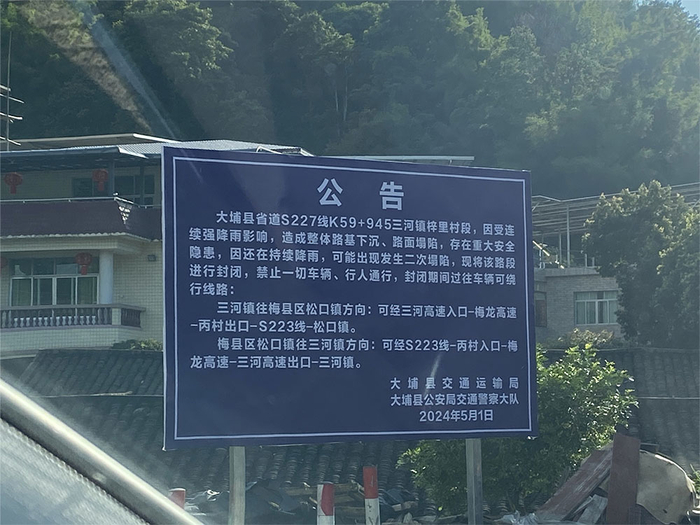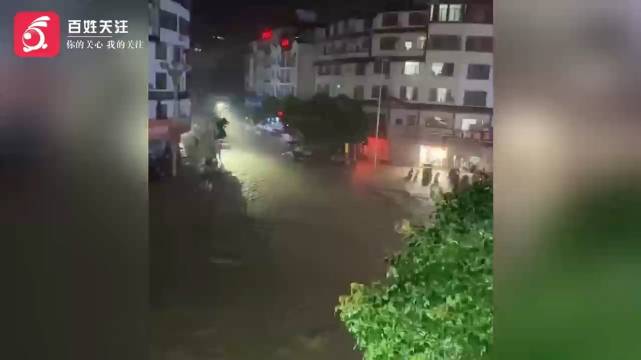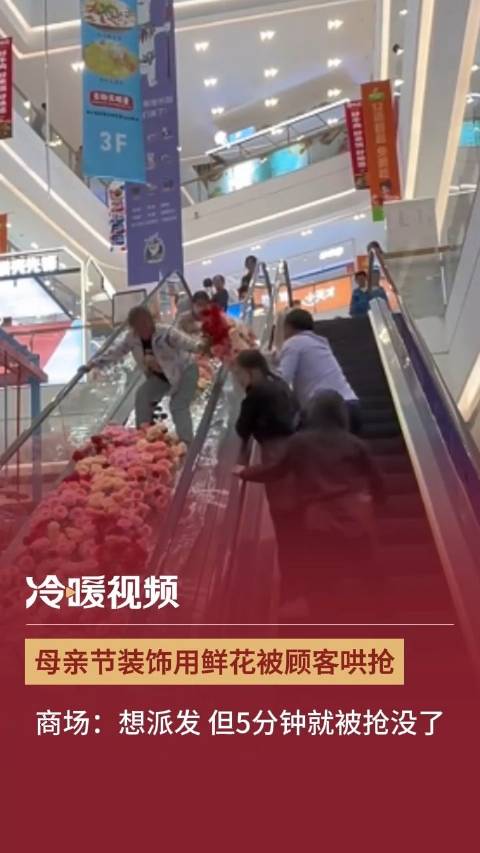In addition to the wheel hub, other body debris is like a paper ball wrapped in mud, which is difficult to identify.
At 1:00 a.m. on May 7, at K11+900m in the east extension section of S12 Meilong Expressway, these parts found from the landslide were placed on the roadside. The complete frame has been placed on the open ground near the Traffic and Transportation Administration Bureau of Dapu County, Meizhou. Most of the vehicles involved in the accident are sunken and deformed, with broken glass, and the remaining frames are covered with sediment; Some of the front engines of the vehicles are missing, leaving obvious burning marks; Each vehicle is painted with red paint digital identification, from "1" to "23".
According to the press conference on landslide rescue in Chayang section of Meida Expressway, as of 14:00 on May 2, 23 vehicles had fallen, 48 people were dead, and the DNA of another 3 people was to be further compared and confirmed; 30 people were injured and there is no life danger at present.
The surging news learned from the insiders that the collapse section was damaged by water in August 2022, with slope collapse and chute damage. Since then, reinforcement and improved drainage have been carried out. The restoration works will be completed in batches from April to September 2023.
In addition, we learned from the interview of the surging news that this section or the surrounding area had been inspected and maintained many times before the incident. In the month before the collapse, at least 5 batches of maintenance personnel have cleaned the drainage system within one kilometer around the collapse; A week before the collapse, the local hollowing of the secondary slope platform and the felling of the underlying trees were also backfilled and sealed at about 500m around, with the nearest distance of about 30m; Some maintenance personnel said that about an hour before the collapse, no road abnormalities were found on the road sections involved.
As the operation and management party of Meida Expressway, Guangdong Dachao Expressway Co., Ltd. (hereinafter referred to as "Dachao Company") sorted out 41 key slopes of Meida Expressway in 2024, including K11+870-K12+153 downstream embankment slope at the collapse point, and installed GNSS automatic monitoring equipment.
Chen Zhipeng, a scholar who is engaged in geotechnical engineering and slope stability analysis and research, told the surging news that mountain roads will not be specially reinforced in general, "we should balance safety and economy"; The design of expressway will consider the 50 year and 100 year return period rainstorm and flood, but in case of extreme weather, it may exceed the bearing capacity of the highway.
In the industry, the patrol of slope subgrade is also subject to capital, manpower, technology, etc. Even the intelligent monitoring equipment GNSS for slope displacement may have monitoring blind spots. Li Jiachun, associate professor of the Highway School of Chang'an University, pointed out to the surging news that if the landslide is sudden, the GNSS equipment may not be able to give early warning.
In addition, according to the Xinhua News Agency on May 4, after the landslide disaster, the Guangdong Provincial Government set up a disaster investigation and assessment team headed by the governor. At present, the cause of the disaster is under investigation and assessment.
 On May 1, some roads in Sanhe Town, Dapu County were closed due to potential safety hazards in the subgrade
On May 1, some roads in Sanhe Town, Dapu County were closed due to potential safety hazards in the subgrade "About ten cars fell down and the fire started"
After experiencing life and death, Huang Jiandu, 67, watched the smoke rise from the landslide.
On the evening of April 30, his son-in-law drove home from Longgang, Shenzhen to Meizhou with a family of seven. At about 2:30 in the morning the next day, when driving to the section of Meida Expressway, the people on the bus were sleeping, and the car body suddenly shook, and they woke up.
Rao Xinyu, Huang Jiandu's granddaughter, remembered that the roadside railing behind him was sinking, the right tire was stuck in the crack of the road, and the tire blew out. His father still stepped on the accelerator to accelerate. The car nearly hit the railing in the violent shaking, and finally ran across the collapsed road.
Site photos show that the road section involved is a two-way four lane road, and the collapse point starts from the median of the road. According to the previous report of the Nanfang Daily, the length of the collapsed road is about 17.9 meters and the area is about 184.3 square meters. One or two hundred meters after the collapse, Huang Jiandu and his family got off the bus and hurried back. They raised a flashlight and waved to the driver to stop. However, some vehicles still fell into the pit.
In desperation, Huang Jiandu drilled through the railing beside him, ran from the opposite lane to the front section of the landslide, knelt down and forced a dozen cars to stop. He recalled to the surging news, "When I knelt down to block the car, there was no fire in the cave in (place), because there was no fire and smoke, and the car coming could not see the situation in front. After about ten cars fell off, one tram fell off and started to fire."
Many people who experienced the landslide told the surging news that some vehicles at the landslide were stacked together, accompanied by combustion and explosion. According to the screenshot of the WeChat friends circle distributed by Hu Juntao at 2:27 a.m. on May 1, under the darkness, a large amount of smoke was dyed red in the firelight. "The bridge was broken, many cars fell down, and there were constant explosions. We were 100 meters away from death."
Liu Yongjin, 37 years old, and Cai Xuanda, a retired soldier of the "post-00s" generation, chose to rescue in flames.
Liu Yongjin remembered that there were more than ten cars on fire at that time, and people were coming out of the car three or four meters away from the fire. After finding a gap in the roadside canal, they climbed down the railing, turning on the flashlight with one hand and grasping the grass on the slope with the other to prevent slipping.
"The straight-line drop from the bottom to the subgrade is about 4 meters, but it took five or six minutes", Liu Yongjin said. They walked in the "Z" shape to get closer to the landslide. It was dark, and they could only identify the direction by the cry for help and the sparks from the burning vehicles. He heard four explosions, and each time, the cries of the crowd would ring from the bottom of the slope a few meters away.
The six injured people he helped rescue were from three accident vehicles. The youngest girl was only 3 years old. When Liu Yongjin handed her to Cai Xuanda, she leaned on his shoulder and vomited some blood; The girl's father, who was in his 30s, said that his ribs were broken, and he dragged the grass to climb up with difficulty, while he held the other's buttocks to work together.
Liu Yongjin remembered that there was also a boy in his teens who had been covering his left leg and yelling pain, saying that his mother was still under the car and hoped that he could save her. However, the accident vehicle was difficult to get close to, so he had to put his hands under the boy's armpit and deliver him to Cai Xuanda. With the flames almost flush with the road surface, the heat waves came, and they didn't dare to stay any longer.
A netizen who claimed to be the family members of the victims said on the social platform on May 4 that on the evening of April 30, five members of his family returned from Foshan to Meizhou. When they got off the expressway, they suddenly encountered a landslide. When they fell into a pit about two floors high, there were several cars underneath; The two-and-a-half year old son bumped into the windshield from the back seat, and the family has fallen into a coma. He took his son to a safer mound and turned back, but found that the rear door could not be opened. Meanwhile, several cars fell down and the fire began to spread. He had to pick up his son and continue climbing. His wife, mother and mother-in-law were engulfed by the fire, and his son was sent to the hospital ICU for treatment due to cerebral hemorrhage.
The surging journalist contacted the person close to the netizen, who said that the child had been transferred to the ordinary ward at present.
According to the plan, Zhang Wanwan's family and two friends made an appointment to travel to Xiamen on May Day. The group drove two cars, one for Zhang Wanwan, her husband, two children and her cousin, and one for two friends. After the landslide, Zhang Wanwan's family fell down and died. A friend drove to the service area to go to the toilet and escaped.
Both Zhang Wanwan and her husband come from Jiangxi. They have been doing business in Guangzhou for many years, and their two children are in primary school.
 Some of the front engines are missing, leaving obvious burning marks
Some of the front engines are missing, leaving obvious burning marks A total of 577 local emergency, public security, fire, health, transportation, communications and other rescue forces were dispatched, 64 rescue vehicles were mobilized, and carpet search and rescue was carried out after the incident.
On May 2, Meizhou City, Guangdong Province, held a press conference on the accident and said that as of 2:00 p.m. that day, 48 people had died in the accident, and the DNA of three others was being compared and confirmed. There were 23 vehicles collapsed in the landslide, most of which were buried by soil, with large burial depth; And some vehicles burn, which increases the difficulty of rescue; Previously, there was heavy rainfall and the soil was loose, making it difficult for large rescue equipment to enter the core area for rescue.
On May 10, Meizhou Municipal Commission for the Assessment of Good Samaritan Action announced that it planned to confirm the good Samaritan actions of Huang Manqiu, Huang Jiandu, Wang Xiangnan, Liu Yongjin, Cai Xuanda and other five people in the disaster of Meizhou Dalian Expressway, such as car stopping and rescue.
The slope of the accident section was reinforced last year
Before the collapse, he Shenwei, a villager, once thought that the high-speed slope had "discharged flood".
The road section involved in this incident belongs to the east extension line of Meizhou Dapu Expressway, passing through the mountain of Anqian Village, Chayang Town, Dapu County, Meizhou, and was completed and opened to traffic in December 2014. Last year, He Shenwei contracted Xiaanqian Village Shantang Reservoir to be changed into duck pond, which was located at the foot of the mountain below the landslide, with a straight-line distance of about 400 meters.
Since April, there have been many rounds of heavy precipitation in Meizhou. The average accumulated rainfall in Meizhou is 621.7 mm, 2.49 times more than that in the same period of the year, which has exceeded the historical maximum rainfall in April (437.3 mm in 1980) since there were meteorological records. It rained for 16 consecutive days from April 16 to May 1.
A person who was involved in the construction of the extension line of Meida Expressway told Pengpai News that the section where the landslide occurred passed through the local mountainous area and was "built by cutting mountains". In case of rainstorm, there are often small-scale landslides on rural roads in nearby villages.
After successive rains, He Shenwei watched the water level in the duck pond rising, and the dirt road to the duck house was flooded. It didn't work to drive a forklift, so he changed a small boat to transport feed. During this period, the duck pond became more and more turbid in the drainage of high-speed convergence.
He recalled that on the morning of April 28, water poured down the slope and washed for nearly an hour, mixed with a lot of sediment. When he received the notice from the village committee in the early morning of May 1, the duck house was almost crushed by the earth from the collapse, and the scene was also cordoned off.
According to the public data, since January 1, 2021, the operation and management of Meida Expressway will be taken over by Dachao Company, whose largest shareholder is Guangdong Communications Industry Investment Co., Ltd. (hereinafter referred to as "Guangdong Communications Investment Company").
The surging news learned that the K11+870-K12+153 downstream embankment slope including the collapse point is one of the 41 key slopes recorded by the Spring Tide Company in 2024. The geological condition of the slope is sandy soil, and the arched skeleton grass planting is used for slope protection of Grade I to Grade III slopes. The slope of this collapse section is a disease site washed by rain, which has been repaired before the disaster.
In August 2022, Dachao Company found that the downstream slope of K11+870 to K12+153 section (including K11+900 at the collapse) was damaged by water, and entrusted CCCC Second Highway Survey, Design and Research Institute to carry out the construction design of treatment and restoration works.
According to the field survey, the secondary slope of the above slope has collapsed, the arch skeleton has cracked and deformed, and the chute on the slope has been damaged.
At that time, the treatment plan was to repair and strengthen the slope, and C20 concrete was used as slope protection for the trimmed slope; Repair the chute, platform intercepting ditch and inspection step; The spacing of drain holes at the slope toe and slope surface shall be densified to ensure the effective diversion and drainage of seepage water from the slope.
After passing the review, the restoration project plan will be completed in batches from April to September 2023.
In the opinion of Wang Lei, a road and bridge engineer engaged in highway construction and maintenance, the aforementioned slopes were damaged by water or due to poor drainage, shallow trenches, damages, etc. The strong rainfall scouring and infiltration lead to the decrease of soil strength, increase of dead weight and decrease of slope stability.
Chen Zhipeng, a scholar who is engaged in geotechnical engineering and slope stability analysis and research, believes that from the perspective of geotechnical engineering theory, the concrete face wall in the above repair scheme can effectively maintain the stability of the slope, but if the road drainage is not smooth, the water pressure will be applied to the soil, which may have side effects.
Chen Zhipeng said that mountain roads generally will not be specially reinforced, unless the engineering geological conditions of this section are poor and it is located in some special and important areas, such as residential areas, industrial areas or some important infrastructure under the slope. There is no such situation around the collapse section, and according to the terrain conditions of Meizhou, "if each section is carefully done, the cost of the project is too large, and any project construction, safety and economy should be balanced."
"The frequency of rainstorm and flood will be considered in the design of highway subgrade construction, such as 50 year return period and 100 year return period. If encountering extreme weather, the bearing capacity may also be exceeded," he said.
According to the press conference, as of May 2, the Spring Tide Company has organized the construction design unit, maintenance design unit and slope experts to carry out site survey and study the restoration plan of the affected road section.
Pengpai News contacted the company several times to learn about the design, monitoring and maintenance of the road section in question. The other party said that they were cooperating with the investigation and had no more information to disclose.
At present, the national and Guangdong provincial geological experts have rushed to the site to carry out disaster site investigation, evaluate the stability of the disaster body and its surrounding slopes, divide the safety area and the dangerous area, guide the establishment of five manual observation points in the dangerous area, arrange two observation points of instruments and equipment, and monitor the disaster body and its surrounding slopes 24 hours a day.
Difficulties in subgrade maintenance monitoring
After the accident, maintenance personnel close to the accident site rushed to the scene and began to set up roadblocks. After that, the fire rescue personnel arrived. The road maintenance workers are usually the people closest to the expressway, but even after the accident, they were surprised by the disaster.
According to the bidding materials publicized by Spring Tide, since 2023, Guangdong Guanyue Road and Bridge Co., Ltd., Guangdong Lulutong Co., Ltd., Guangdong Xinyue Traffic Investment Co., Ltd., and Guangdong Jingtong Highway Engineering Construction Group Co., Ltd. have participated in the daily maintenance of S11 Spring Tide Expressway and S12 Meida Expressway managed by Spring Tide.
Several maintenance personnel of Meida Expressway said that their daily work includes but is not limited to inspection and maintenance of road guardrails, signs, pavement cracks, pits, drainage ditches and slopes.
One of the maintenance personnel said that the key work of his maintenance team since March was to clean up the drainage system of the expressway. In April, it rained for several days, so the work of cleaning and maintenance became more and more, and the number and shift arrangement of the maintenance team increased.
From March to the end of April, at least 5 batches of maintenance personnel have carried out maintenance work such as drainage system cleaning, slope inspection, shoulder grass cutting, and replanting of seedlings within 1km around the accident site.
On April 25, some maintenance personnel backfilled and sealed the partial hollowing of the secondary slope platform at a distance of more than 500 meters from the collapse point; On April 27, some maintenance personnel cut down the ambush trees more than 30 meters from the collapse site.
A maintenance worker recalled to the surging news that at about 4:30 p.m. the day before the incident, he drove through the landslide section and found no abnormal conditions such as ponding and cracks; Less than an hour before the incident, some staff members drove through the road section without noticing obvious abnormalities.
After the accident, Zhou Shicheng, a maintenance worker, and his colleagues rushed to the site and cleared the weeds and bushes on the slope. After that, the cracks and sliding slopes were exposed, and even some drainage pipes were covered with weeds. He remembered that there was a serious point - the retaining wall could not drain water, and the maintenance workers drilled about 20 meters of holes, and there was running water.
In Chen Zhipeng's opinion, if the workers did not find cracks in the road surface before the collapse, there may also be a split between the road surface and the underlying foundation soil. He explained that since April, continuous heavy rainfall has occurred in Meizhou, or "the water pressure is too high, and the groundwater has not been discharged in time". When the fissure water in the mountain body increases, the gap water pressure between the pavement and the subgrade also increases, and finally pushes the subgrade outward.
Different from the "road collapse" mentioned in media reports, Chen Zhipeng believes that the disaster of Meida Expressway should be described as "subgrade slope collapse".
Subgrade refers to the geotechnical structures formed by excavation or filling. According to Chen Zhipeng's analysis, the construction of highway on such a hillside usually involves excavation on the inner side and backfilling on the outer side to form a plane. The starting position of the damage is located in the median of the highway, which is also the interface between filling and excavation.
Patrol maintenance of slope subgrade is a part of road maintenance, but due to restrictions on funds, manpower and technology, subgrade problems may be ignored in actual maintenance.
Zhang Yue, a bridge inspection engineer, told Pengpai News that due to the cost pressure, subgrade inspection mostly depends on manual work, but it is difficult to cover some steep and lush slopes.
If you want to use UAVs, Zhang Yue mentioned that this not only requires approval, but also requires AI identification training in advance, which may cost more than budget. He believes that under ideal conditions, the use of satellite screening technology to screen subgrade hidden dangers is more efficient.
"Spring Tide Expressway" mentioned in the official article on March 29 that in order to comprehensively launch the pre flood slope safety risk troubleshooting and hidden danger management, the company mobilized "manual survey combined with UAV", used "Beidou intelligent monitoring data evaluation", and "dispatched more than 200 troubleshooting personnel, equipped with 5 UAVs, and screened 130 high slopes".
The surging journalists found that there were five sets of GNSS slope displacement monitoring equipment in operation on the slope within 1km to the west of the accident site, and the nearest one was only about 50m away from the collapse point. The distribution and working status of this type of equipment can not be confirmed because the collapsed slope is buried with soil.
 Automatic equipment monitoring for the involved sections of Meida Expressway
Automatic equipment monitoring for the involved sections of Meida Expressway The MIS30 universal GNSS monitor with the shape of "mushroom head" is embedded with a solar panel with the factory date of September 2, 2023. The equipment manufacturer is Guangzhou Ji'o Electronic Technology Co., Ltd. (hereinafter referred to as Ji'o Electronics), which can monitor the plane and elevation displacement changes of millimeter level.
Where will the equipment be distributed?
According to the technical personnel of GEO Electronics, the installation of such equipment should be reviewed by geological experts and monitoring experts according to the national monitoring specifications, and the stations to be installed should be evaluated according to the development of slope, rock stratum, rainfall and slope conditions.
A GNSS equipment supplier in Beijing told Pengpai News that it would generally arrange spots in places with potential landslide or collapse hazards.
During monitoring, a set of equipment measures the three-dimensional coordinates of a point, which is point monitoring. Li Jiachun, associate professor of the Highway School of Chang'an University, said, "Continuous rainfall (normal use) has been considered in the design, and the power of the solar panel used and the battery capacity will be comprehensively considered."
How to set alert threshold? The aforementioned supplier said, "There are different requirements according to different geological conditions. There may be places where the annual (displacement) change is 10 cm and there is no need for early warning, or there may be places where the daily change is 5 mm and there is a need for early warning. After the early warning is issued, people will be required to inspect, dispose of or rush to repair."
The technical personnel of GEO Electronics said that generally, "the equipment sends data once an hour" to the monitoring unit. Specifically, in this accident, if there is an early warning message, it will be sent to Guangdong Hualu Transportation Technology Co., Ltd., a subsidiary of Guangdong Communications Group. In addition, the data will be uploaded to provincial and municipal platforms and synchronized to national platforms.
As for whether Hualu Company and the local natural resources bureau had received an early warning before the incident, the surging news contacted the relevant departments without reply.
Wang Lei, a road and bridge engineer, pointed out that it is difficult to monitor all subgrades if the route is too long, even if it is monitored by instruments.
In addition, Li Jiachun said in the surging news interview that landslides can be divided into slow type and sudden type, and only the former can use GNSS to send an early warning. But if this disaster is more due to the rapid increase of soil moisture content, monitoring the groundwater level or water pressure may be more effective.
As for preventing rainwater from infiltrating into soil, Zhai Qian, associate professor of the School of Civil Engineering of Southeast University, introduced the capillary barrier system that has been popularized and applied in Singapore. This system can effectively block rainwater infiltration, and will not affect the daily evaporation of water in soil. "The capillary barrier system is mainly divided into three layers, the first layer is the green layer, which can be planted with green vegetation; the second layer is the fine particle layer, which is mainly used as the drainage layer; the third layer is the coarse particle layer, which is mainly used as the water stop layer."
Chen Zhipeng said that the accident reminded that the prevention and control level of slope engineering geological disasters needs to be improved. He told the surging news that in order to prevent similar mountain highway landslides, engineers with geotechnical expertise should be equipped for engineering design and maintenance; However, at present, the status of domestic geotechnical engineers is not high, the price is depressed during bidding, and the work plan is difficult to be in-depth and detailed. Once problems are found in the work, the road maintenance costs and traffic efficiency may become constraints.
After the accident, on May 4, Guangdong Provincial Department of Natural Resources held a provincial video dispatching meeting, requiring the rapid organization of geological disaster risk and hidden danger screening, focusing on the "mountain side, water side, village side" junction, mountain, cliff, slope and other disaster prone areas, as well as the completed or under construction geological disaster management projects and other key parts, to carry out "pull the net" screening. In case of potential risks, immediately implement control measures to minimize various risks. Strengthen the meteorological forecast and early warning of geological disasters and the analysis, research and judgment of various data at monitoring points, and timely release the early warning information. The safety of people's lives should be put first, and personnel evacuation and risk avoidance should be done well.
(To protect the privacy of respondents, Hu Juntao, Zhang Wanwan, Chen Zhipeng, Wang Lei, Zhou Shicheng and Zhang Yue are pseudonyms)
Editor in charge: Trish


















